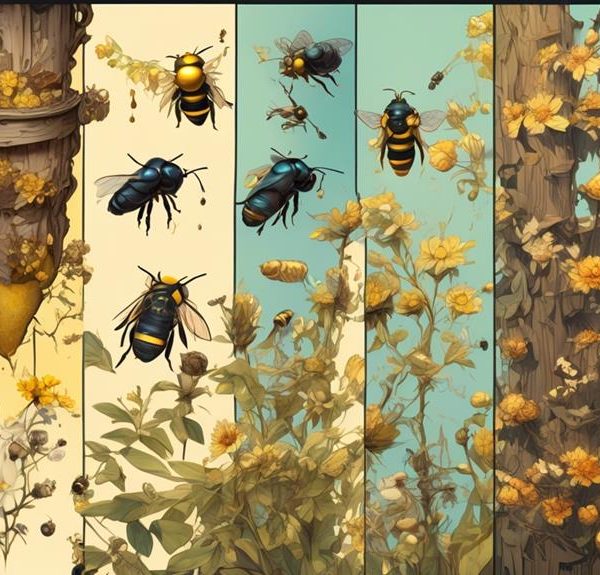Witness the awe-inspiring emergence of carpenter bees and uncover the mysteries behind their industrious life and environmental impact.
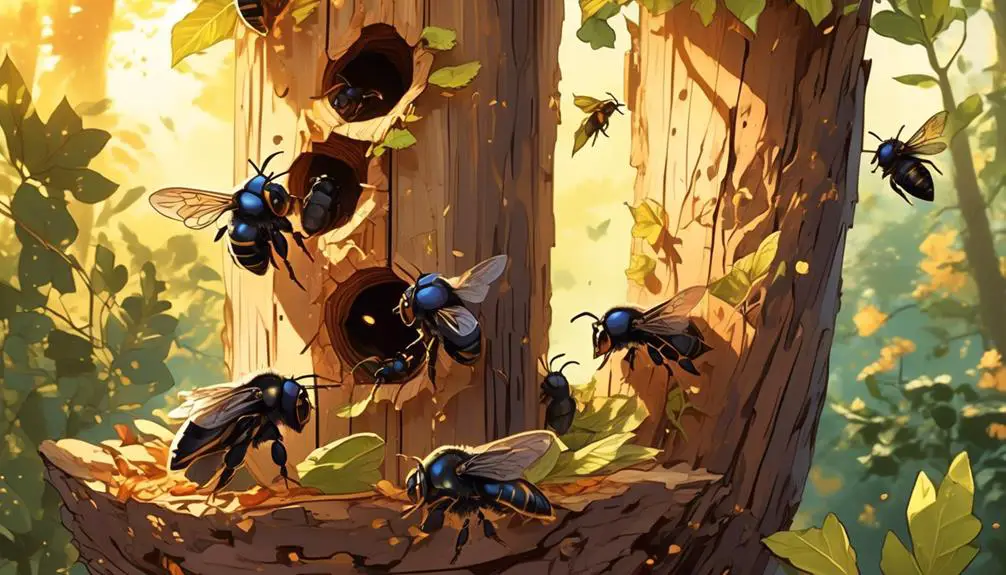
Carpenter Bees Emergence
Like a bee to honey, you're naturally drawn to understanding the intriguing world of nature. Specifically, you find yourself fascinated by the emergence of carpenter bees. These industrious insects, named for their unique nesting behavior, are often misunderstood – feared for their ability to burrow into wood, yet admired for their role in pollination.
As you navigate through this exploration, you'll uncover the intricate details of their life cycle, decipher how to identify an infestation, and learn how to manage any potential issues. But be warned, this journey may leave you with more questions than answers, inviting you to further unpack the environmental impact of these tiny carpenters.
Key Takeaways
- Carpenter bees exhibit territorial aggression and cooperative behavior.
- Female carpenter bees display impressive carpentry skills and share nests with other females.
- The life cycle of carpenter bees is annual, starting with mating in the spring and ending with females overwintering in tunnels.
- Carpenter bees have a positive environmental impact, including being effective pollinators, aiding in natural pest control, and enhancing soil aeration.
Understanding Carpenter Bees Behavior
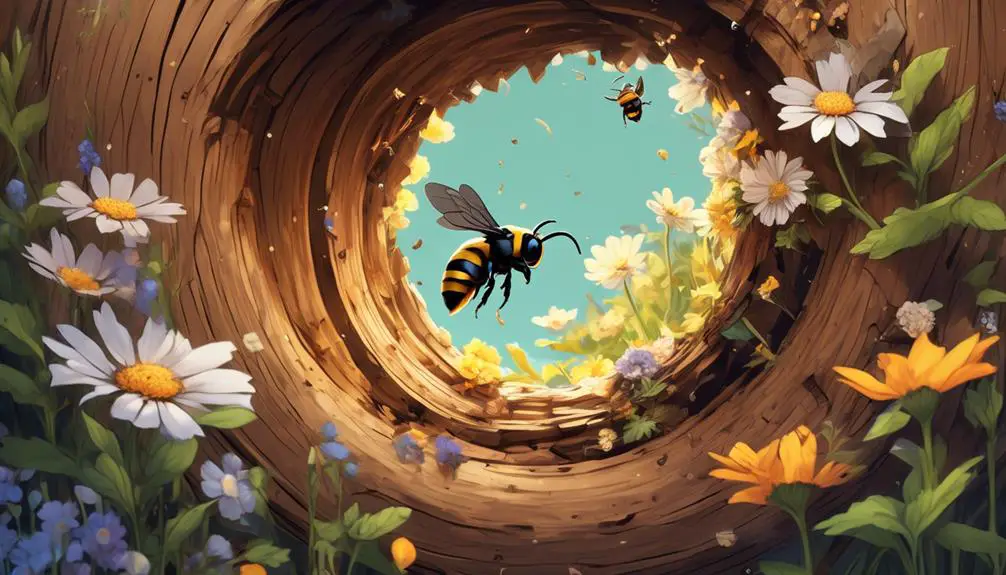
To comprehend the behavior of carpenter bees, you'll first need to understand that these solitary insects exhibit a fascinating mixture of both territorial aggression and cooperative social interaction. Unlike honey bees, they don't live in colonies but rather lead an independent lifestyle, each female bee responsible for her brood. However, they aren't hermits. They're known to share nests with other females, showcasing a unique cooperative behavior.
Their territorial aggression is primarily evident in males. Despite lacking a sting, they'll fiercely protect their territory, often intimidating intruders with robust aerial displays. But don't be fooled, it's usually more bark than bite.
They're also industrious creatures, with females displaying impressive carpentry skills. They bore into wood to create intricate tunnels, serving as nurseries for their offspring. It's a delicate process, revealing a meticulous attention to detail and precision.
Furthermore, their mating behavior is quite fascinating. Males patrol nesting sites, waiting to mate with emerging females. It's a competitive process, with males often fighting for the opportunity.
Life Cycle of Carpenter Bees
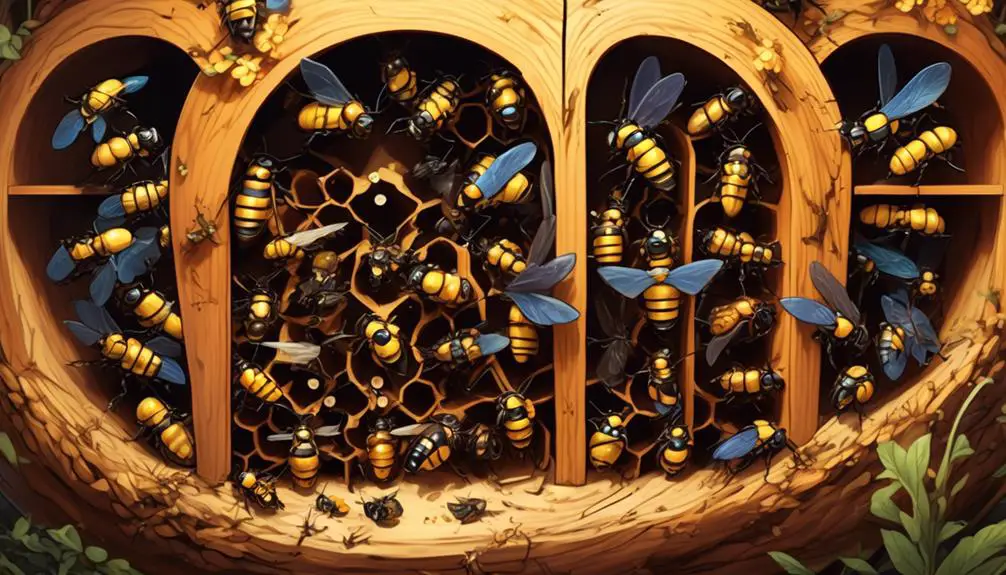
Understanding the life cycle of carpenter bees gives you a deeper insight into their unique ecological role and behavior patterns. This life cycle is annual, beginning with mating in the spring. After the mating process, the female bees bore into wood to create a nest, forming a series of tunnels and cells. She'll lay her eggs in these cells, usually six to eight, and provide each with a ball of pollen for the larvae to feed on.
The eggs hatch into larvae, which then pupate and transform into adult bees. This metamorphosis process, from egg to adult, takes about seven weeks. After undergoing this transformation, the adult bees will remain in their cells until the following spring. They'll then emerge, fully grown, ready to mate and begin the cycle anew.
It's important to note that male carpenter bees don't survive the winter, they die after mating. It's the females that overwinter in the tunnels, emerging in the spring to start the cycle again. Therefore, carpenter bees' life cycle is marked by remarkable resilience and adaptability. Their survival hinges on the females' ability to weather harsh winters and reproduce effectively in spring.
Identifying Carpenter Bee Infestations
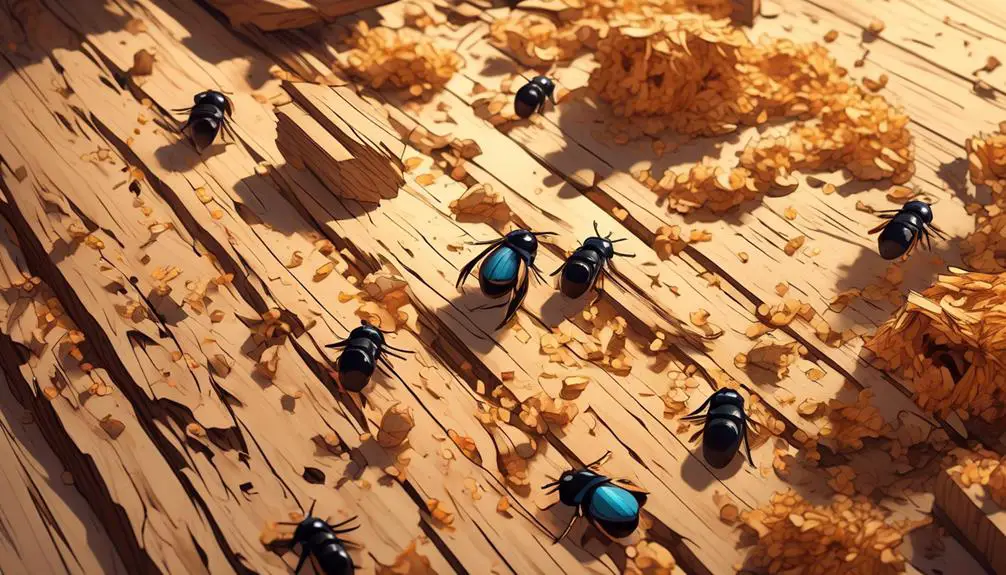
Spotting a carpenter bee infestation in your home or garden might not be as straightforward as you'd think, given their unique nesting habits and subtle damage signs. However, paying attention to specific signs can help you identify any potential infestation quickly.
Sign | Description | Why it Matters |
|---|---|---|
Sawdust Piles | Carpenter bees excavate wood to nest, resulting in sawdust-like waste, known as frass. | Frass usually signifies active infestation. |
Noise | You may hear a buzzing sound within your walls or wooden structures. | Bees are excavating tunnels or chambers. |
Holes in Wood | Carpenter bees create round, smooth holes about half an inch in diameter. | These are entrance holes to their nests. |
Bee Sightings | Carpenter bees are active during the day, especially females who forage for pollen. | Repeated sightings near your home might indicate a nearby nest. |
To confirm an infestation, you'd need to find a combination of these signs. Remember, carpenter bees prefer untreated wood, so check your decks, porches, and other wooden structures regularly. If you're uncertain, consult a pest control professional. Early detection is key in preventing extensive damage and controlling the carpenter bee population in your area.
Managing Carpenter Bee Issues
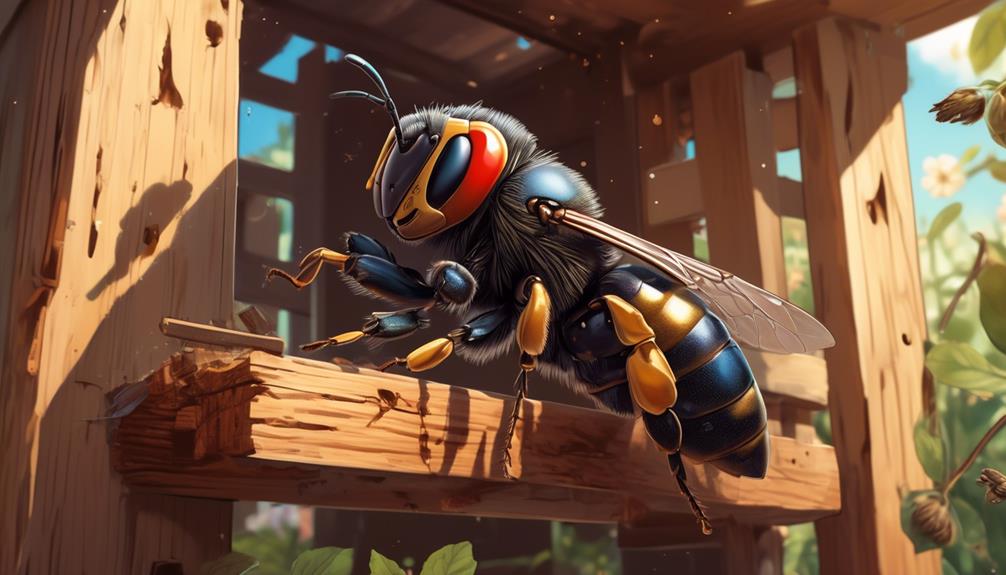
Once you've identified a carpenter bee infestation, it's crucial to take immediate steps to manage the issue and prevent further damage to your wooden structures. You can opt for commercial pesticides, professional extermination, or natural repellents to control these wood-boring pests.
Commercial pesticides like insecticidal dust and sprays are effective but require careful handling. Apply these in the early evening or night when bees are likely to be in their tunnels. Ensure you're wearing protective gear as these substances can be harmful.
Professional exterminators can be considered if the infestation is extensive. They possess the expertise and equipment to handle large-scale invasions effectively, reducing the chances of recurrence.
Natural repellents, such as essential oils or citrus peels, can deter bees. Carpenter bees dislike strong scents, making this a safe and environmentally friendly option. However, their effectiveness varies and may not be sufficient for severe infestations.
Regular inspection and maintenance of your property can also help prevent infestations. Paint or varnish exposed wood to make it less appealing to bees, and seal any existing holes to discourage reuse.
The Environmental Impact of Carpenter Bees
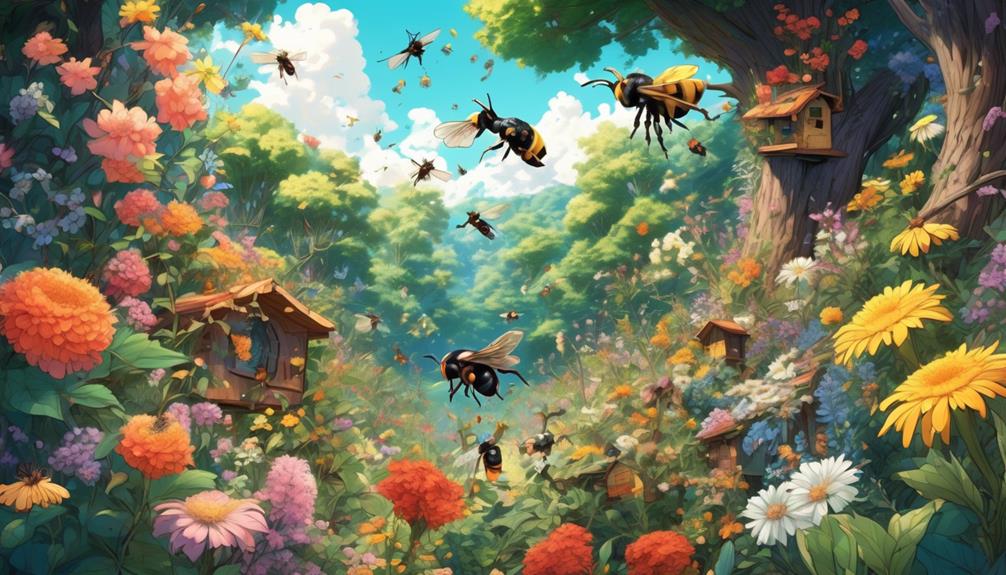
While managing carpenter bee infestations is crucial for the preservation of our wooden structures, it's equally important to consider the environmental role these insects play. Despite the structural damage they cause, carpenter bees are critical contributors to our environment.
Here's a brief look at their environmental impact:
Impact | Description |
|---|---|
Pollination | Carpenter bees are effective pollinators, especially for open-faced flowers. |
Food Chain | As a food source, they play a vital role in the sustenance of various bird species. |
Biodiversity | Their nesting habits support the survival of other insects and fungi. |
Natural Pest Control | They prey on wood-boring pests, aiding in natural pest control. |
Soil Aeration | Their burrowing activities aid in soil aeration, which enhances plant growth. |
It's your responsibility to balance the need for carpenter bee control with the understanding of their environmental contributions. Developing sustainable management strategies is paramount. Remember, our actions today determine the health and diversity of our ecosystems tomorrow.
Conclusion
In sum, you've navigated the world of carpenter bees: their behavior, life cycle, signs of infestation, management strategies, and environmental impact.
You've seen how they're not just pests, but crucial pollinators with a significant role in our ecosystem.
However, unchecked, they can cause considerable damage.
So, it's crucial to balance their environmental benefits with proactive management.
Remember, understanding carpenter bees is the first step towards coexisting with these industrious creatures.

